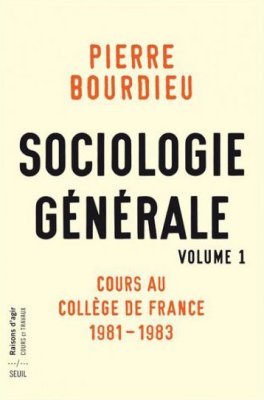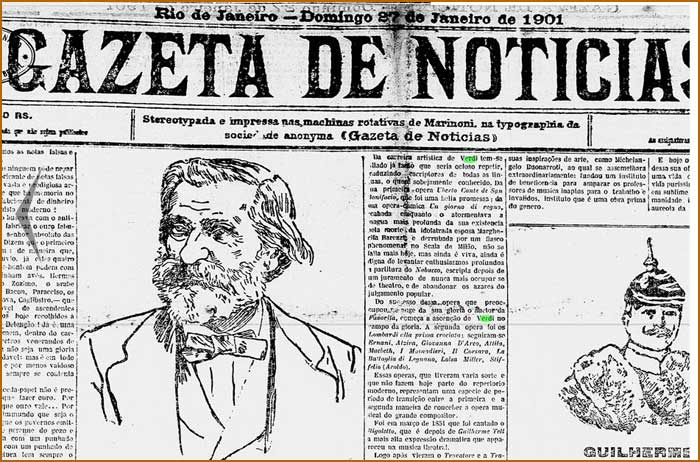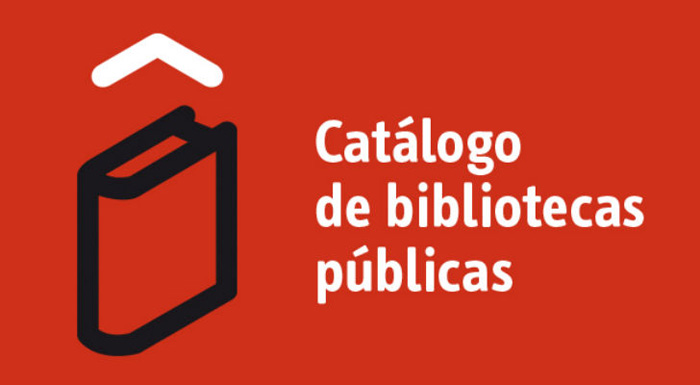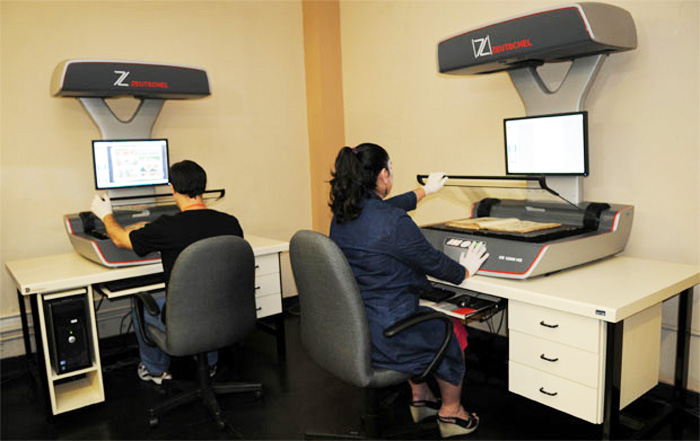
sábado, 30 de julio de 2016
Bourdieu, a Lecture on the Method

redalyc.org
|
| 808 |
REVISTAS CIENTÍFICAS |
| 21 763 |
FASCÍCULOS |
| 275 593 |
ARTÍCULOS A TEXTO COMPLETO |
Por país:   Por Institución: | Por disciplina: |
  Sistema de Información Científica Redalyc ® Universidad Autónoma del Estado de México Versión 2.0 © 2012 redalyc@redalyc.org   |
Conicet Digital
Explorar por
Títulos por autor
- Mateos Diaz, Cristian Maximiliano (7)
- Zunino Suarez, Alejandro Octavio (7)
- Anzorena, Claudia Cecilia (6)
- Baggio, Ricardo Fortunato (6)
- Salvarezza, Roberto Carlos (6)
- Alderete, Maria Veronica (5)
- Alexander, Pedro Manfredo (5)
- Basualdo, Marta Susana (5)
- Cadena, Carlos Alberto (5)
- Doctorovich, Fabio (5)
- ... Ver mas

Últimas incorporaciones
- O'Leary, Nataly Cristina ; Peralta, Paola Fernanda ; Mulgura, Maria Ema(Instituto de Botánica Darwinion, 2013-12-30)
- Ponce, Marta Monica ; Kieling-Rubio, Maria Angélica; Windisch, Paulo Günter (Soc Botanica Brasil, 2013-09)
- Pardiñas, Ulises Francisco J. (Unidad de Zoología y Ecología Animal, Instituto Argentino de Investigación de Las Zonas Aridas, CRICYT, CONICET,2013-12)
- Cicuttin, Gabriel; Nava, Santiago (Fundacao Oswaldo Cruz, 2013-02)
- Muñoz, (Universidade Estadual Paulista (UNESP), 2013-12)


Bibioteca de la OEI

Servicio de Información y Documentación especializado en educación, ciencia, tecnología, sociedad e innovación (CTS+I), y cultura en Iberoamérica. Integra todos los servicios de búsqueda y recuperación de información bibliográfica en soporte papel y en formato electrónico |
| Por Autores | Ir a Búsqueda por Autores |
| Por Materias | Educación | Ciencia / Tecnología |
| Cultura | Educación y TIC | |
| Otros temas |
| Avanzada | Ir a Búsqueda Avanzada |
| Por Materias | Educación | Ciencia / Tecnología |
| Cultura | Otros temas | |
| Por Países | Países | Organismos |
| Bibliotecas | Revistas | Otros enlaces |
| Educación | Educación | Directorio de Ministerios |
| Ciencia y Tecnología | Ciencia y Tecnología | Otros recursos |
| Cultura | Cultura | |
| CC. Sociales y Humanidades | Otros temas |
Biblioteca on line Universidad de Pensilvania

Listing over 1 million free books on the Web - Updated Friday, October 5, 2012
BOOKS ONLINE
Search our Listings -- New Listings -- Authors -- Titles -- Subjects -- Serials
NEWS
We reach one million listings -- Blog (Everybody's Libraries) -- Latest Book Listings
FEATURES
A Celebration of Women Writers -- Banned Books Online -- Prize Winners Online
ARCHIVES AND INDEXES
General -- Non-English Language -- Specialty
THE INSIDE STORY
About Us -- FAQ -- Get Involved! -- Suggest a Book -- In Progress/Requested -- More Links
Edited by John Mark Ockerbloom (onlinebooks@pobox.upenn.edu)
OBP copyrights and licenses
Hemeroteca Digital Brasileña
Hemeroteca Digital Brasileña
Río de Janeiro. La Fundação Biblioteca Nacional pone a disposición de sus usuarios la Hemeroteca Digital Brasileña, un portal de periódicos nacionales (diarios, revistas y publicaciones seriadas) para ser consultado por internet. En ella, investigadores de cualquier parte del mundo pueden tener acceso libre y gratuito a títulos que incluyen desde los primeros diarios creados en el país –como el Correio Braziliense y la Gazeta do Rio de Janeiro, ambos fundados en 1808- a diarios desaparecidos en el siglo XX, como el Diário Carioca y el Correio da Manhã, o que ya no circulan en forma impresa, como el Jornal do Brasil.
Entre las publicaciones más antiguas y raras del siglo XIX se encuentran, por ejemplo, O Espelho, Reverbero Constitucional Fluminense, O Jornal das Senhoras, O Homem de Cor, Semana Illustrada, A Vida Fluminense, O Mosquito, A República, Gazeta de Notícias, Revista Illustrada, O Besouro, O Abolicionista, Correio de S. Paulo,Correio do Povo, O Paiz, Diário de Notícias así como también los primeros diarios de las provincias del Imperio.
En cuanto al siglo XX, se pueden consultar revistas tan importantes como Careta, O Malho, O Gato, así como diarios que marcaron la historia de la imprenta en Brasil, tales como A Noite, Correio Paulistano, A Manha, A Manhã y Última Hora.
Las revistas de instituciones científicas componen un segmento especial del acervo disponible. Algunas de ellas son: Annaes da Escola de Minas de Ouro Preto, O Progresso Médico, la Revista Médica Brasileira, los Annaes de Medicina Brasiliense, el Boletim da Sociedade de Geografia do Rio de Janeiro, la Revista do Instituto Polytechnico Brasileiro, la Rodriguesia: revista do Jardim Botânico do Rio de Janeiro, el Jornal do Agricultor, entre tantos otros.
La consulta, posible a partir de cualquier dispositivo conectado a internet, puede realizarse por título, período, edición, lugar de publicación y hasta por palabra/s. También se pueden imprimir las páginas deseadas.
Además del apoyo del Ministerio de Cultura, la Hemeroteca Digital Brasilera es reconocida por el Ministerio de Ciencia y Tecnología y cuenta con el apoyo financiero de la Financiadora de Estudos e Projetos (FINEP), que hizo posible la compra de los equipos necesarios y la contratación del personal para su creación y mantenimiento. Hasta el momento ya son más de 5.000.000 de páginas digitalizadas de periódicos raros o extinguidos a disposición de los investigadores, número que se irá acrecentando con la continuidad de la reproducción digital.
[Fuente: FBN]

Biblioteca Digital Trapalanda
TRAPALANDA
Trapalanda era el nombre de una tierra mítica y ensoñada. La buscaron para conquistarla y les fue esquiva. Se convirtió en imagen en el ensayo y nombre de alguna revista.
Para la Biblioteca Nacional es el nombre de una utopía: la puesta en acceso digital de todos sus fondos. Aquí se encontrará el lector con distintas colecciones, en las cuales los libros y documentos que la institución atesora se encuentran en forma digital.
Busqueda Avanzada
COLECCIÓN SUGERIDA
Manuscritos de Leopoldo Lugones

Poeta, cuentista y ensayista, figura fundamental de la cultura argentina. La colección de manuscritos adquirida por la Biblioteca constituye el archivo público más importante dedicado a su obra. Posee correspondencia, capítulos manuscritos de El payador y de El dogma de obediencia, entre otros.
> Ver Colección completa
Fotografías
Álbum Serie A. compuesto de 17 vistas fotográficas de las localidades de Ensenada y Berisso (provincia de Buenos Aires), editado por Casa Moroni (La Plata, junio de 1935). La edición del álbum es de tipo artesanal y contiene fotografías a la gelatina de plata.

Periódico La Broma
Periódico publicado por la comunidad afroargentina en Buenos Aires entre mayo y julio de 1876. Reúne las voces, dichos y modismos de la comunidad, su producción musical y semblanzas sociales que incluyen los bailes, las comparsas y el carnaval.
BIBLIOTECAS DIGITALES ESPECIALES
La Biblioteca Nacional tiene acuerdos de integración de bibliotecas digitales con la Iberoamericana –que incluye varias bibliotecas nacionales de América Latina y España–, y constituye, junto con la Biblioteca Nacional de Brasil, la Biblioteca Virtual Pedro de Ángelis. Al mimo tiempo desarrolla colecciones y acervos de información específicos como el Martín Fierro interactivo y el Acervo digital anotado.
BIBLIOTECA DIGITAL TRAPALANDA
MUSEO DEL LIBRO
Y DE LA LENGUA
ESCUELA NACIONAL
DE BIBLIOTECARIOS
Agüero 2502 I CP C1425EID Ciudad de Buenos Aires I República Argentina (54) 11.4808.6000 I contacto@bn.gov.ar
Biblioteca Digital Universidad de Chile
Accede a todos los recursos de información disponibles en la Universidad de Chile: catálogo de bibliotecas y archivos, repositorio institucional, tesis, revistas, libros, bases de datos suscritas y colección de objetos digitales.
Descubre las colecciones
- Libros
- Tesis
- Manuscritos
- Fotografías
- Obras de arte
- Artesanías
- Mapas
- Afiches
- Partituras
- Objetos médicos
- Archivos sonoros
- Audiovisual
Galerías destacadas
Bibliotecas de Montevideo en Línea
La Intendencia de Montevideo lanzó el catálogo en línea de sus bibliotecas

Montevideo. La Intendencia de esta ciudad tiene una red de 19 bibliotecas públicas, quince de ellas en funcionamiento y las otras cuatro en procesos de reapertura y reacondicionamiento. Los servicios que ofrecen son gratuitos y la colección total comprende alrededor de 65.000 ejemplares de 8.000 títulos.
Por esto, la Intendencia creó este catálogo en línea que habilita búsquedas personalizadas por tema, título de publicación, autor o biblioteca. Según dijo un vocero: “El sistema detalla la información del material bibliográfico, la cantidad de copias existentes y la disponibilidad según cada biblioteca”.
El material disponible en las bibliotecas puede leerse en las salas o llevarse al hogar en préstamo. Además de libros, las bibliotecas cuentan con un importante acervo de “revistas, juegos y soportes audiovisuales, como vídeos, DVD y CD-ROM”, señalan desde la Intendencia.
Las bibliotecas, a su vez, ofrecen un espacio particularmente pensado para los niños, con sitios específicos dedicados a promover la lectura entre los más pequeños, además de actividades recreativas y lúdicas. Funcionan asimismo como centro de actividades educativas y de formación, recreativas y sociales de la comunidad donde se encuentran.
[Fuente: La red 21]
Revistas de la Universidad de Córdoba
TODAS LAS REVISTAS DE LA UNIVERSIDAD DISPONIBLES EN LA RED
La Universidad Nacional de Córdoba se une al acceso abierto
Córdoba. La Universidad Nacional de Córdoba presentó el nuevo portal de revistas producidas por esa casa de estudios y el video institucional de la Oficina de Conocimiento Abierto (OCA), que puede verse aquí mismo.
Frente de sobreabundancia de información que caracteriza a internet, estas plataformas ofrecen un valor adicional que el lector puede agradecer: el material que publican debió pasar antes por un proceso de revisión y validación —habitualmente a cargo de sus pares en las distintas disciplinas— que garantizan un piso de rigor científico. Los portales de revistas como Latindex, SciELO y Redelayc se destacan por la calidad y la diversidad de las temáticas que abarcan. También hay espacios enfocados a campos específicos, como el sitio web de CLACSO y el repositorio de la Alianza de Servicio de Información Agropecuaria.
En esa línea, la Universidad Nacional de Córdoba (UNC) cuenta ahora con su portal de revistas científicas, académicas y culturales, que hoy ofrece 57 títulos en línea elaborados por docentes e investigadores de sus diversas facultades y centros miembro. La UNC es la segunda universidad en todo el continente, después de la de Harvard, con un área específica para estos menesteres: la Oficina Conocimiento Abierto, creada en 2014. Desde allí se pretende concientizar sobre el tema, promover la producción de publicaciones científicas y capacitar a investigadores, editores, becarios, estudiantes de posgrado y bibliotecarios en el uso de programas de código abierto para gestionar estas plataformas, según apunta su directora, Alejandra Nardi.
[Fuente: OCA]




![[EFF Free Speech Online Blue Ribbon Campaign]](http://onlinebooks.library.upenn.edu/freespeech-horiz.gif)






















 Archivo Central
Archivo Central Museo de Arte Contemporaneo
Museo de Arte Contemporaneo Museo de Arte Popular Americano
Museo de Arte Popular Americano Museo de Medicina
Museo de Medicina Departamento de Antropología
Departamento de Antropología Cineteca U. de Chile
Cineteca U. de Chile Centro de Estudios Judaicos
Centro de Estudios Judaicos Colecciones de Arte
Colecciones de Arte
No hay comentarios:
Publicar un comentario